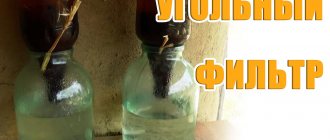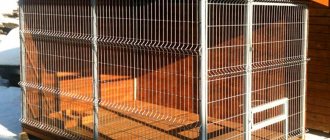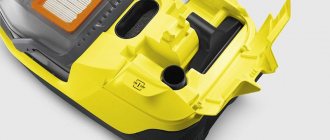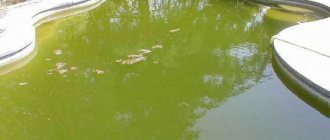Today, a variety of substances are used to purify water from contaminants, but activated carbon remains the most popular.
This most useful element is necessarily used in all filters without exception - from the simplest “jugs” to multi-stage systems with reverse osmosis membranes. Is it possible to make a carbon water filter with your own hands?
Principle of operation
Activated carbon is produced by special processing of carbon-containing raw materials (roasting without access of air + steaming + treatment with reagents), as a result of which it is possible to achieve the formation of a huge number of tiny pores with a radius from 0.2 to 200 nm.
At the same time, the surface area that interacts with pollutants increases millions of times: for example, in 1 g of activated carbon it can range from 500 to 2200 square meters. m.
Such a material acquires adsorption properties, that is, the ability to capture and retain large amounts of impurities due to attraction between molecules.
The pollutants that activated carbon deals with are organic in nature. These are various petroleum products, benzene, phenol, polycyclic aromatic hydrocarbons, phosphorus and organochlorine pesticides. In addition, it removes active chlorine molecules from water (dechlorination).
What is graphene sorbent?!
So, a graphene sorbent is, first of all, a chemical element, carbon, the structure of which has been radically changed. Graphene carbon is a kind of modification that allows the passage of water molecules, various salts and allows the retention of impurities, which include chemical elements and petroleum products.
In order for the graphene sorbent to perform its specified functions, it must be compacted to form a membrane.
Types of carbon filters
Depending on the form in which the carbon is present in the filters, there are two types:
- Fast: coal is contained in the form of granules. These filters are convenient because they can be cleaned of mechanical contaminants that clog the pores by backwashing.
- Flow-through: the carbon element has the form of a cartridge - bulk or pressed. Pressed cartridges are good because they do not generate dust, and bulk cartridges have the ability to replace coal (in collapsible models).
Household carbon filters are divided into:
- autonomous (jug type), in which water seeps through the cartridge under its own weight;
- flow-through (filter attachments, tabletop and stationary).
Water must be supplied to the latter under pressure.
Purification of water for subsequent consumption is very important for consumer health. How to make a water filter with your own hands if suddenly the water turns out to be dirty and a modern filter is not available? Read carefully.
You will find a classification of filters and tips on choosing a device in this review.
A large water filter under the sink is the best option for obtaining high-quality drinking water. Here https://aquacomm.ru/cancliz/mnogokvartirnyie-doma/santehnika/filtry-dlya-vody-pod-mojku-kakoj-luchshe.html you will find useful tips on choosing a device for home use.
Is it really necessary to purify water from natural sources?
Today, in almost every kitchen you can find the simplest design filter for water purification, made in the form of a transparent jug, inside of which there is a replaceable container (cartridge) with an adsorbent composition.
Water filter jug Aquaphor “Ultra”.
These devices are inexpensive and great for purifying small amounts of water. It would seem - why not a solution for a long trip to the country, where you have to use water from a well or even an open reservoir, and there is no stationary cleaning system?
The jug itself is not that expensive, and is sold complete with a filter cartridge, which must be periodically replaced with a new one as the installed resource becomes dirty. But if you have to purify a large amount of water, then the cartridge will have to be changed often, and, by the way, it costs not so little. That is, you have to take a spare one with you so that you don’t have to return to the city to buy a new one.
It also happens that not only the water intended for drinking and cooking, but all the water entering the house must pass through a filter. It is clear that an ordinary jug will not be enough here, since it simply will not cope with such a voluminous task. This is especially important when water is taken from open reservoirs or wells, since it often contains fine particles of clay, sand, organic matter, and waste products of microorganisms. This water is not suitable for drinking.
In addition, various waste from agricultural work accumulates in the soil, from where it inevitably ends up in groundwater over time. Therefore, water that is not specially purified may contain nitric acids, nitrates, chlorine impurities, sulfates, pesticides and other toxic compounds. And if we add here the proliferating landfills of household waste, industrial emissions and automobile exhausts carried by precipitation, spilled petroleum products...
Prices for Barrier water filters
Filter Barrier
Thus, drinking untreated water from sources that have not been tested at the laboratory level is extremely risky. And cleaning with the help of simple filter jugs is not at all a suitable way to get rid of these compounds dangerous to humans - such devices are, rather, designed for post-purification of tap water that has already undergone a certain preparation cycle.
And yet, even such a jug (with a working cartridge, of course) is better than nothing at all. But what to do if, as they say, “circumstances are pressing,” and there is no way to use the factory filter device? The solution is to try to make, at least temporarily, a filter with your own hands.
DIY making
A good branded filter provides effective water purification, but you still need to buy a cartridge for it somewhere. Summer residents and rural residents rarely have such an opportunity.
Difficulties also arise in the absence of running water: in such conditions, you can only use a pitcher-type filter, and it can prepare no more than 1 - 1.5 liters of water at a time.
To get a supply of, for example, 5 liters, you need to constantly monitor the filter and periodically add water to it.
In such situations, instead of a factory-made filter, you can use a homemade one, which does not require purchased cartridges. It will be designed on the principle of filter jugs, so it can be used in areas without running water.
Plastic bottle filter
The manufacturing procedure is extremely simple:
- You can use a plastic bucket with a lid as a storage container in which purified water will be collected.
- The container in which the improvised cartridge will be located (untreated water will be poured into it) is proposed to be made from a plastic bottle with a pre-cut bottom.
- To connect both reservoirs, you need to make a hole in the lid of the bucket, the diameter of which corresponds to the outer diameter of the bottle neck. The neck must fit tightly into the hole, otherwise the bottle will tip over under the weight of the water. If the hole is too large, the neck can be wrapped with cloth or rubber.
- Gauze folded in several layers is placed in the bottle, on top of which several alternating layers of activated carbon and washed sand are poured. The sand will keep the coal from floating. You can use gravel or grass padding instead.
To prepare activated carbon at home, just place a few scraps of wood (not pine) or fruit seeds in a tin can, close it tightly and put it in the fire for a while.
Another option is to heat the wood in an old frying pan, first covering it with sand to prevent air from entering. You can also use store-bought charcoal intended for grilling.
Purifying water with a homemade filter
A homemade filter can be more voluminous. The loading container can be made from a plastic drinking water barrel with a volume of 10 liters. It has a wider neck into which the backfill will fall. Therefore, the filter “cartridge” should be made slightly differently:
- We put a tight padding of gauze or napkins into a piece of plastic pipe with a diameter of 40 mm on one side.
- Then we pour activated carbon into this tube and close it on the other side with the same stuffing.
All that remains is to insert the homemade cartridge into the neck of the container for untreated water. The use of a pipe with a diameter of exactly 40 mm is due to the fact that it ideally fits the neck of a standard 10-liter plastic bottle: it fits into it with sufficient tension, so that no sealing is required.
Materials for filtration equipment
The efficiency of cleaning depends on the quality of the filtration material; a limited number of them are used in wells, the main ones being:
Stainless steel. In addition to strength, the material has flexibility and excellent corrosion resistance; the durability of stainless steel is tens of years. It is used to make strong meshes and wires that are mounted on top of the pipes. The disadvantages include the high cost of stainless steel products.
Plastic. Plastic is another common material for the manufacture of filters in water sources; meshes and cords are made from it, which are cheaper than stainless steel. Plastic is corrosion-resistant and inert to most chemicals, easy to install and has a long service life. The disadvantages of plastics include low physical strength, which does not allow them to withstand heavy loads at significant depths.
Non-ferrous metals. Copper, brass, and bronze can be used in the manufacture of water filters without any restrictions; they have high corrosion resistance and a long service life. Soft alloys with a high copper content are recommended for use at shallow depths to avoid deformation from strong water pressure. In the manufacture of filter elements, brass mesh and thick wire made of brass or copper are used.
Rice. 4 Filter for casing pipe - installation in the well
Steel. Steel filters are susceptible to corrosion and can be used as a budget option in water intake sources intended for technical needs. Increased content of iron oxide in water as a result of iron corrosion of more than 0.3 mg. per liter leaves a yellow residue on water main equipment and plumbing fixtures. Galvanized steel also rusts over time to form zinc oxides, which are harmful to human health - this material is not recommended for use in water filter elements.
Filter operation
The operating rules for any carbon filter usually prohibit the consumption of the first portion of filtered water. It may contain coal particles, so it is recommended to drain it.
For a homemade filter filled with homemade activated carbon, such a procedure is not necessary: this substance, if it was obtained without the use of any reagents, does not pose a health hazard.
For ease of use, you can embed a tap from a wine package into the storage container.
Disadvantages of homemade devices
A self-made filter copes with the task quite effectively. In addition, the cost of its production will be small.
However, such designs have their disadvantages:
- small resource of filter elements;
- there is no possibility of self-cleaning;
- labor-intensive manufacturing process;
- fragility.
The most serious problem with homemade filters is their inability to absorb microorganisms dangerous to human health. Water purified in this way must be boiled before use.
Life time
The period during which activated carbon retains its sorption properties depends on the volume of impurities in the water.
But in any case, for this material it is short-lived.
The backfill of a homemade filter is usually changed every three days, unless there is a noticeable deterioration in the organoleptic characteristics of the water before that.
Tap water is not intended for drinking, so it is boiled, but this method does not make the water completely clean and healthy. Those who care about their health choose filters for water purification. Which device to choose and how much it costs, read on.
Why you need to install a bottom filter for a well, you will find out by reading this article. Types of well filters and their maintenance.
Adviсe
In order for a homemade cleaning system to work the first time, you need to take into account some important points:
The cleaning properties of the filter depend on the correctly formed filling.
The volume of the container should be such that the components in it are located freely and allow water to flow down.- From a hygiene point of view, natural fabrics are not practical.
In a humid environment, they quickly rot and contribute to the appearance of microbes and an unpleasant odor. As a result, the bottom layer has to be changed frequently. Instead of gauze, it is better to use lutrasil or any other synthetic material. - It is recommended to replace charcoal with activated charcoal. The latter absorbs toxic substances, heavy metals and kills some pathogenic microorganisms.
- If purified water is in doubt, it should be boiled.
- It is not recommended to regularly drink river water that has been passed through a homemade filter.
Assembly of the structure
At the bottom there is a two or three liter glass jar into which purified moonshine flows. The cap is screwed onto the neck of the bottle, and the bottle itself is lowered into the jar upside down.
Pieces of coal are poured into the bottle on top - a little more than a third of a two-liter bottle in height, and covered with the bottom. If you add little coal, the filtration efficiency will drop; if you add more coal, the coal will absorb some of the alcohol, the product will be of high quality, but the strength will drop by a couple of degrees.
The black color of moonshine is removed in the next step
Manufacturer's choice
Externally, all filters are not very different - they are just a mesh for the hood. Therefore, it is often difficult to understand which filter for the hood is better, and even more so why, because the difference is in the filling and the manufacturer, of which there are many on the market. Therefore, when choosing, you have to be guided by the ratings and reviews of the products. But first you need to list a few points that apply to all filters:
- Heat resistance.
- Compatibility.
- No damage.
The heat resistance should be about 70-80 degrees Celsius, otherwise there is a high chance that the parts may melt, and this is not very good. Compatibility directly affects whether it will fit a particular hood. If there is no compatibility, it simply will not work or will not work correctly.
By the way, there are also universal models that will fit all hoods (most often they are made of aluminum). Well, it’s clear that there are damages - they exist, which means the product is of low quality and it’s better to buy another one.
Let's move on to the manufacturers. There are many of them and there are both companies making cheap and expensive products.
Here are a few of them:
- Fox.
- Cata.
- Faber.
- Shindo.
- Hansa.
- Reeson.
- Adek.
- Krona.
- Elica.
- Kuppersberg.
- Shtain.
- Zigmund.
- Bosch.
- Germany.
Basically, all companies that produce models of hoods with filters make them. And when choosing, you need to understand that it is better to buy the same ones that were originally included in your kit, because they will have the maximum compatibility with the hood. That is, if you bought a hood from Elikor, Krona or Hephaestus, then the carbon filter for the elikor hood should be original, just like for other companies.
Cleaning
Makes moonshine transparent. The bottle, which was the basis of the coal column, is washed away from dust particles. The neck is filled with cotton wool and screwed on with a lid. The assembled structure is inserted into a glass jar. The column is filled with cloudy moonshine. It is advisable to cover the bottle with something on top to prevent the alcohol from evaporating.
Cotton wool removes the black color, moonshine becomes transparent
Pure moonshine flows into the jar. But after a while the cotton filter will become clogged. In this case, the unfiltered moonshine is poured back into the jar (from which it was taken), the cotton wool is changed, the column is assembled and the tank is again filled with unpurified moonshine. The cotton wool is replaced several times. Immediately after cleaning, the moonshine is ready for use.
Your mark:
Changing coal in cassettes
A person can update the carbon filter for a range hood with their own hands in 5-10 minutes. The initial step in changing absorbent filler is to purchase it. Home appliance stores sell granular fillers.
Coal for hood
The process of throwing out old contents and pouring new contents into cassettes is performed as follows:
- 1. dismantling the main grille of the structure - the grease trap;
- 2. careful removal of the old cleaning component;
- 3. careful opening of the thin, upper mesh of the cassette;
- 4. complete removal of old content;
- 5. additional cleaning of the place where the filler is located;
- 6. adding, uniform distribution of new granules;
- 7. Assembling the odor absorber structure, installing all components in place.
The process is performed 4 times a year, the operation algorithm is simple and understandable. Filtration hoods, which have grease and carbon additions at the same time, have excellent functional characteristics. It is worth buying carbon add-ons designed for changing granules, this option is cheaper.
You can watch an example of restoring a carbon filter in the following video:











